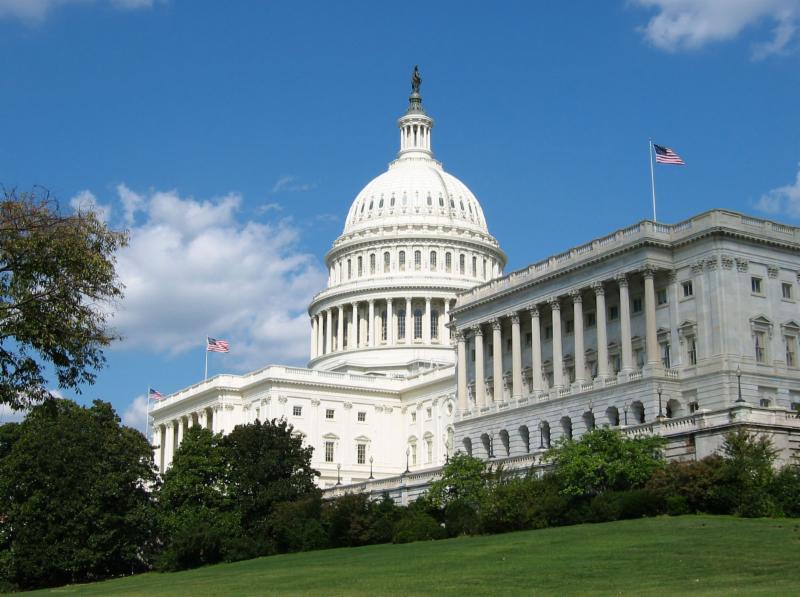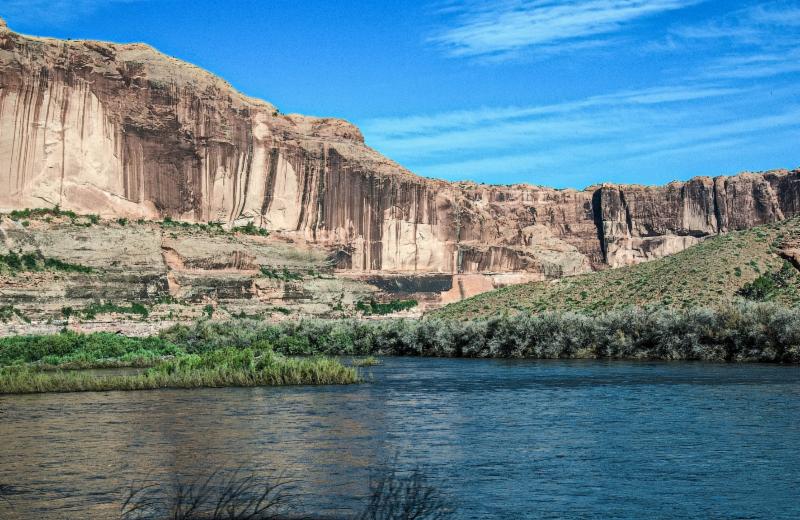Listen: Charlie Potter and Zach Lowe on Conservation
McGraw photos
McGraw President and CEO Charlie Potter recently welcomed Zach Lowe, national director of McGraw's Conservation Leaders for Tomorrow program, to his weekly "Great Outdoors" show on WGN Radio.
Zach and Charlie discussed making a difference in how we manage lands and think about wildlife and fisheries, as well as our whole experience with outdoor recreation.
|
|

Outdoor-Friendly Bills Introduced in U.S. Senate
By Kristyn Brady/TRCP
Photo by Lara Eakins/flickr
Only hours ahead of their departure for the Fourth of July recess, Senator John Barrasso (R-WY), Senator Ben Cardin (D-MD), and a bipartisan group of senators introduced a strong package of bills that would benefit fish and wildlife habitat nationwide, while funding critical watershed restoration efforts in the Mid-Atlantic and improving access for recreational shooters on public lands.
The legislation would:
- Reauthorize the North American Wetlands Conservation Act-a grant program through which each federal dollar invested is matched an average of three times over by non-federal dollars-at $50 million annually through 2022.
- Authorize the National Fish Habitat Conservation Act, which was created to foster partnerships that improve conditions for fish species and enhance recreational fishing opportunities.
- Reauthorize the National Fish and Wildlife Foundation, the nation's largest conservation grant-maker.
- Reauthorize Chesapeake Bay restoration program at $90 million per year through 2022.
"What makes this effort different from sportsmen's packages of the more recent past is that, right from the outset, it deals with meaningful conservation priorities by reauthorizing and instituting programs that will actually enhance fish and wildlife populations, habitat, and access," says Whit Fosburgh, president and CEO of the
Theodore Roosevelt Conservation Partnership
.
|
Turning a Cranberry Bog Back Into a Wetland
By Jess Bidgood/The New York Times
Photo by bbcameriangirl/flickr
The alewife, a type of river herring, wriggled against the current, a 10-inch streak that disappeared from view as it rounded a bend in the stream.
It was a normal springtime pilgrimage for the fish, which lives in the ocean but swims upstream to spawn. But this time it was happening in a surprising place - a waterway that was not here two years ago.
For more than a century, this place near Plymouth, Mass., was the site of a cranberry bog, a thick carpet of the fruit's vines atop a bed of sand with straight water channels. But commercial cranberry farming, which began in Massachusetts, has flagged here in recent years as prices dropped and different farming methods emerged elsewhere. Unfolding here now is an ambitious project: turning a cranberry bog back into the coastal wetland it once was.
|

What Exactly Is the Clean Water Rule?
McGraw photo by Alex Garcia
The announcement prompted an immediate and harsh response from environmental groups. But what exactly is the Clean Water Rule, and how will rescinding it change things?
The rule was
introduced in 2015 by the Obama administration
. It was meant to
clarify the 1972 Clean Water Act
, which was hazy about whether some waters-particularly seasonal streams and wetlands-fell under the EPA's regulatory authority. The Clean Water Rule allowed for all "navigable waters" to be included under the Clean Water Act, extending protection to the drinking sources of nearly a third of the U.S. population.
|

River Restoration Shows Cooperation
Can Work
By Paul Bruchez/High Country News
Photo by John Weiss/flickr
The Colorado River runs through the heart of my family's ranch near Kremmling, Colorado, where I live and work, so we have firsthand knowledge of the importance of water. Our family's irrigated meadows and livestock operation depend on it, and it's the common currency of both our local agriculture and recreation economy.
That's why, over the years, it's been so hard for me to see the river sharply decline. For decades, water utilities on the Front Range have been pumping water from the Upper Colorado, leading to devastating impacts on the health of the river. Lower flows spiked water temperature and silted in the river bottom. This smothered insect life, damaging the river ecosystem and what had been a world-class trout fishery. Agriculture also suffered as river levels dropped. My family and other ranchers in the valley saw irrigation pumps left high and dry as our operations became unsustainable.
Recreation is another important part of our local economy. Besides helping on the family ranch, I'm also a fly-fishing guide here in the valley, and it became clear to me that a restored river could be a much more valuable asset for our community and state.
|
|
|
|
|
|